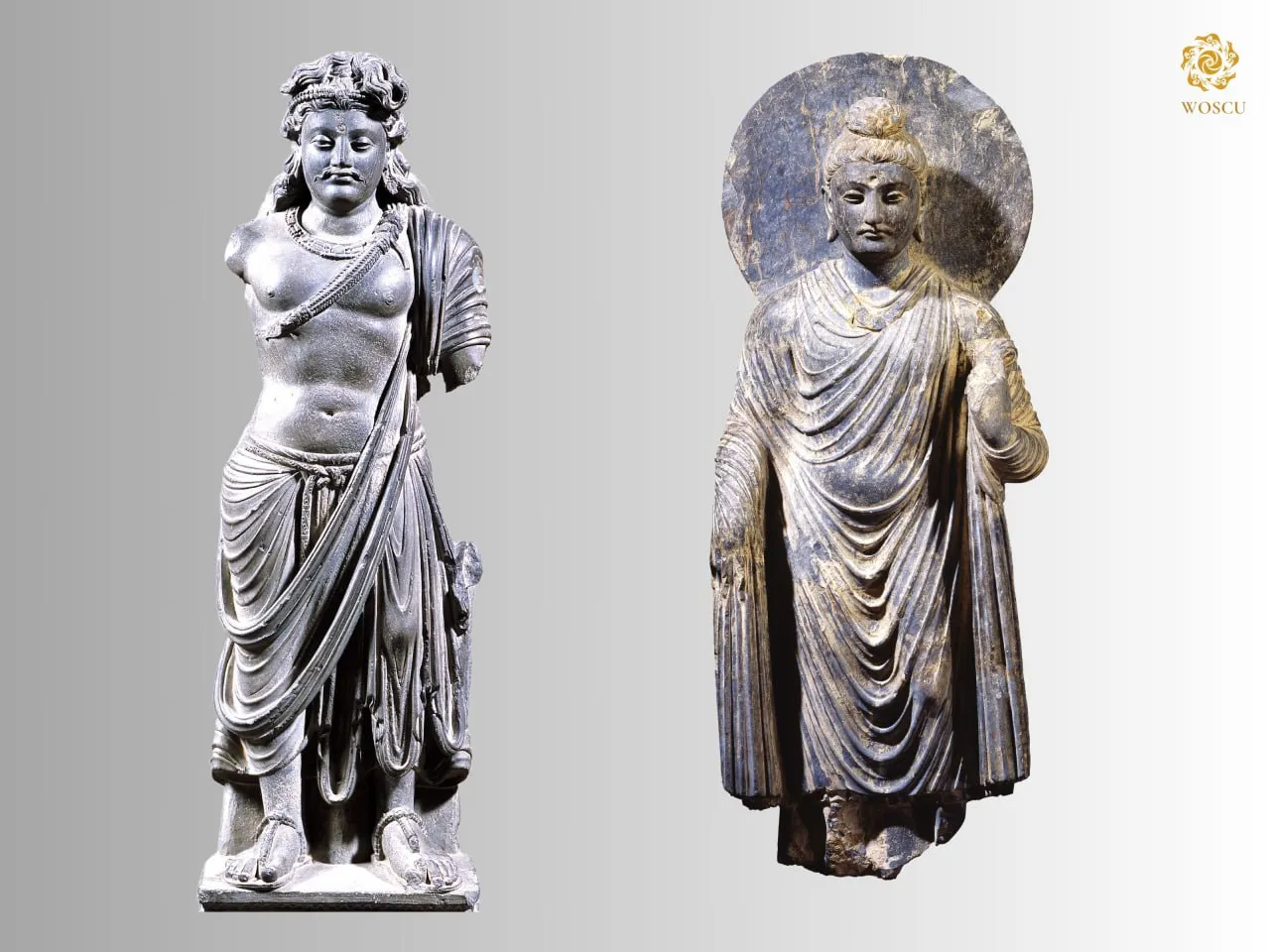
It is believed that the first sculptures depicting Buddha as a person who achieved enlightenment were made either in Gandhara or in the Indian region of Mathura. Both areas were ruled by the Kushans. Recently, due to new findings of various sutras in Gandharan language, the theory that Mahayana Buddhist movement, which was a religious reform of the Buddhist teaching was formed in Gandhara in the period of dominance of the Kushan dynasty, and from here it spread to other regions.
As for the Buddhist canon in art that developed in Gandhara, it also spread into different regions of Asia through trade routes, the safety and functioning of which were provided by the power of the Kushan dynasty. On the territory of modern Uzbekistan, some Buddhist temples and monasteries of the Kushan period are found as well, where Buddhist Gandharan sculpture was installed. The brightest example of such sculpture is the statue of Buddha from Fayaztepa.
Yet, it is impossible to say that the art of Gandhara was accepted in Central Asia in its original form. For instance, such an important Buddhist temple and monastery complex, as Karatepa, becomes the core of its own Buddhist culture, in which cave and ground constructions of a Samgharam type are combined and accompanied with portrait sculptural images. This example demonstrates a syncretic feature of the Buddhist culture in Central Asia.
You can learn more about the topic in the book-album "Cultural legacy of Central Asia in Japanese Museums" (volume XX) in the series "Cultural Legacy of Uzbekistan in the World Collections".
The general sponsor of the project is the oilfield services company Eriell-Group.
